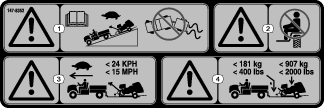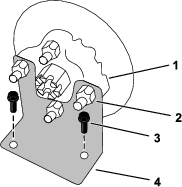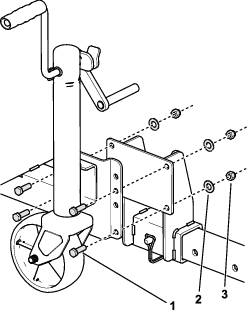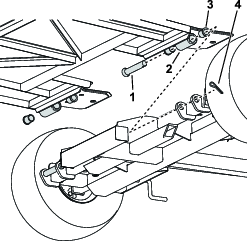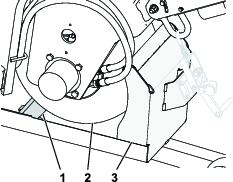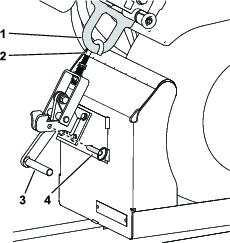Maintenance
Recommended Maintenance Schedule(s)
| Maintenance Service Interval | Maintenance Procedure |
|---|---|
| After the first 10 hours |
|
| Before each use or daily |
|
| Yearly |
|
Checking the Tire Air Pressure
| Maintenance Service Interval | Maintenance Procedure |
|---|---|
| Before each use or daily |
|
Tire air pressure specification: 96.5 kPa (14 psi)
Check the air pressure in the tires (Figure 7). Add or remove air as needed to set the air pressure in the tires to the tire air-pressure specification.

Checking the Wheel Bearings for Freeplay
| Maintenance Service Interval | Maintenance Procedure |
|---|---|
| Yearly |
|
-
Remove any machines that may be stored on the trailer.
-
Use a jack to raise the trailer and place jack stands under the trailer.
-
Check each wheel for excessive freeplay (i.e., free movement of the tire and hub assembly).
If you detect excessive freeplay, contact to your authorized Toro distributor.
Checking the Torque of the Wheel Lug Nuts
| Maintenance Service Interval | Maintenance Procedure |
|---|---|
| After the first 10 hours |
|
| Yearly |
|
Torque specification: 108 N⋅m (80 ft-lb)
Check the torque of the wheel lug nuts each time you install the wheels and after the first 10 hours of operation.
Torque the wheel lug nuts in the pattern as shown in Figure 8 to the specified torque.
Warning
Failure to maintain proper torque could result in failure or loss of wheel and could result in personal injury.
Torque the wheel lug nuts to the specified torque.


